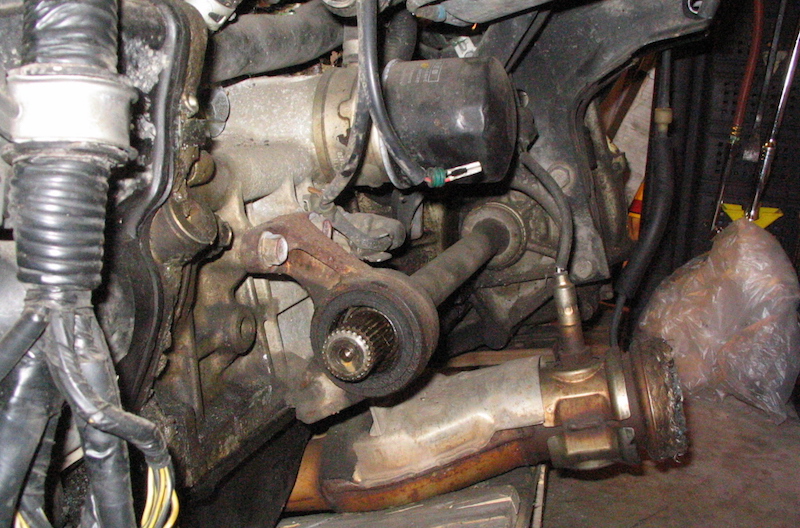You know that an illuminated Check Engine Light (CEL) means that a trouble code from a sensor or system has been stored in the engine's powertrain control module (PCM). You probably also know that it's easy to access the trouble codes by connecting a code reader or scanner device to the vehicle's diagnostic port under the dash — these codes are part of the OBD-II standard (a standardized set of trouble codes across all makes and models), which was adopted in the 1990s.
NOTE: Code scanning is one of the free services at your local Advance Auto Parts store.
What can be problematic is interpreting the codes. A single problem could cause a cascade of trouble codes from various sensors, or it might just register a single code. You have to be able to read the tea leaves and determine why a sensor is displaying a certain code. In other words, sometimes it's just a failed sensor but other times there's something else in a system that has caused the sensor to send readings that are outside of normal parameters.
Also, before you go much farther in troubleshooting, it's a good idea to do a little research on the specific year, make and model of the vehicle. Often, problems are common with specific vehicles and might be mentioned in a technical service bulletin (TSB) or even a recall.
Once you're confident you've addressed the problem, clear any codes in the PCM and see if they reoccur. Some systems may take several failure cycles before registering a trouble code again.

P0301: What It Means
The P0301 code means that cylinder 1 has a misfire and isn't burning fuel properly. Bearing in mind that you need air, fuel and spark for combustion, the cause of a P0301 code could come from a few different sources. In any event, a P0301 code is serious and shouldn't be put off.
Symptoms
- Lack of power
- Poor fuel economy
- Rough idle
- Noticeable "miss" and vibration when accelerating
- CEL illuminated
- CEL flashing
- Exhaust smells strongly of unburnt fuel
- Hesitation or bucking/jerking when accelerating
What Happens If I Ignore It?
Ignoring a P0301 trouble code is a bad idea. When raw fuel is being dumped into the exhaust system, it can quickly destroy the internal structure of the catalytic converter, and that's an expensive repair. It can also cause damage to the fuel system, ignition system and possibly internal engine damage, so you really don't want to put a problem like this off.
Possible Fixes
- Do a thorough inspection for loose, damaged or corroded wiring connections as well as vacuum leaks. Check the electrical connector for the coil pack on cylinder 1.
- If your vehicle is old enough to still have a distributor and plug wires, check the condition of the plug wire for cylinder 1 and make sure the wire's boot is seated firmly on the spark plug. Be sure to check the plug wire's connection at the distributor cap too. If that all looks good, pull the distributor cap and look for wear on the rotor's contact or carbon buildup on the inside of the cap.
- If your vehicle is equipped with coil packs, pull the coil pack for cylinder 1 and exchange it with the coil pack for cylinder 4. If you now see a P0304 trouble code, then the problem is with the coil pack.
- If the coil pack checks out, pull the spark plug for cylinder 1 and examine it for fouling, damage or excessive wear at the electrode and tip.
- If all ignition components (including the plug) check out, start looking for fuel system problems. Check the fuel pressure in the lines and check the injector for cylinder 1. An engine stethoscope can be handy here, as a functioning injector will make a distinct ticking sound as it opens and closes.
- In the event that the injector, fuel system and ignition system all check out, you could possibly have an internal engine problem. It might be time for a compression test and leakdown test, as the issue could be a burned valve, broken piston ring, broken valve spring or a timing chain that has skipped a tooth so the engine's ignition timing is off.
Before you jump to conclusions, bear in mind that in most instances a misfire is due to a problem in the ignition system. Your first step should be a thorough inspection of all electrical connections before you move on to anything else. Also, in many instances a P0301 code might be accompanied by other misfire codes or possibly codes related to the camshaft position sensor or crank position sensor; problems with these sensors can definitely mimic a P0301 code. Keep a cool head, take your time and work through things logically.
How have you dealt with this issue? Let us know in the comments.








